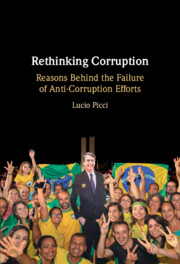Book contents
- Rethinking Corruption
- Rethinking Corruption
- Copyright page
- Dedication
- Contents
- Figures
- Preface
- Part I Laying the Groundwork
- 1 Introduction
- 2 The Consensus on Corruption
- 3 The Mutual Shaping of Measures and Concepts
- 4 Of Causality and Historical Junctures
- 5 What We Talk about When We Talk about Corruption
- Part II Three Case Studies
- Part III Rethinking Corruption
- References
- Index
4 - Of Causality and Historical Junctures
from Part I - Laying the Groundwork
Published online by Cambridge University Press: 27 February 2024
- Rethinking Corruption
- Rethinking Corruption
- Copyright page
- Dedication
- Contents
- Figures
- Preface
- Part I Laying the Groundwork
- 1 Introduction
- 2 The Consensus on Corruption
- 3 The Mutual Shaping of Measures and Concepts
- 4 Of Causality and Historical Junctures
- 5 What We Talk about When We Talk about Corruption
- Part II Three Case Studies
- Part III Rethinking Corruption
- References
- Index
Summary
This chapter discusses attempts to estimate the effects and causes of corruption. Results obtained using the linear regression models have suggested a list of determinants, and of effects, of corruption. They also have implicitly promoted a view according to which we read the observed associations between corruption and other factors in causal terms. This chapter proposes a critical assessment of whether the counterfactual of a significantly different level of corruption from the one observed may be legitimate. From this discussion, corruption emerges as a part of a “dense historical matrix,” one where it is difficult to contemplate changes in individual factors while leaving others unmodified.
- Type
- Chapter
- Information
- Rethinking CorruptionReasons Behind the Failure of Anti-Corruption Efforts, pp. 52 - 71Publisher: Cambridge University PressPrint publication year: 2024

